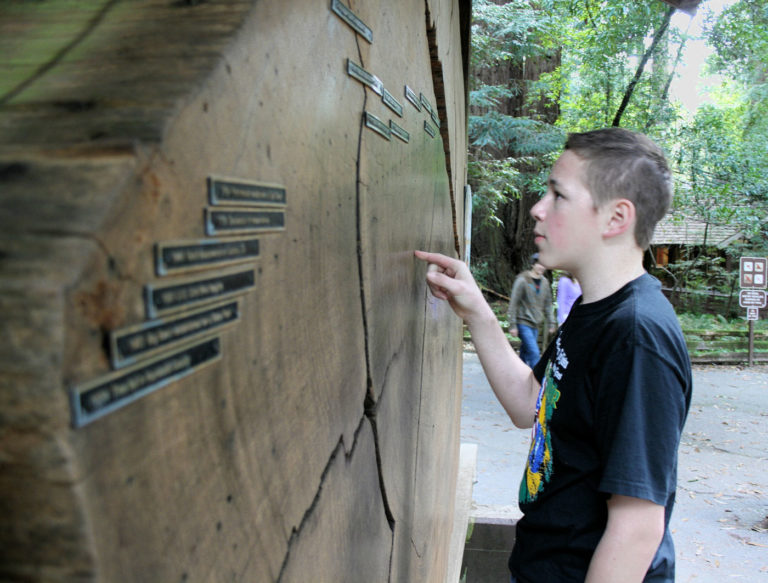
It’s the question that usually comes right after the one about height: “How old do you think this redwood is?”
And in many ways, the answer to this second question can be even more stunning than the first. We’re used to dealing with height – we fly on airplanes, go up elevators – but coast redwoods and giant sequoia can live to be thousands of years old, a fact that is hard to comprehend for a species that rarely gets out of double digits.
“People really like to know how old these trees are,” says Kristen Shive, director of science at Save the Redwoods League. “It’s part of the romance around them.”
Almost as soon as Euro-Americans came across coast redwoods and giant sequoia, they were cutting them down and counting the rings to figure out how old they were. This method remains perhaps the most accurate way to determine the age of a tree, but scientists are limited to using trees that have died and fallen to gather this information because we do not want to cut down living, old-growth giant sequoia or coast redwoods.
If we are interested in gauging and improving the health of a given forest, the age of its trees is an important place to start. It can also be an invaluable way to understand the present and future. Through our partnership with the Redwoods and Climate Change Initiative, tree rings are not just telling us the age of trees, but also how a tree is growing in response to climate change, how much carbon it is storing, and lots of other valuable information.
“For conservationists, understanding growth in relation to past climate has real scientific value, and dating individual trees can help paint a broader, regional picture of climate and fire history. By understanding what they have endured in the past, and their response to the recent drought, we can start planning for a drier future,” says Shive.
Thankfully, researchers have developed a method of counting rings that is easier on the tree. Instead of cutting it down, they bore a narrow hole into the trunk at its base to the center, and pull out a long core, from which they count the rings. For larger trees – such as coast redwoods and giant sequoia – this isn’t quite so straightforward. The largest increment borers can only get about a yard into a tree, which is not long enough to reach to the center of a truly mammoth tree. Redwoods expert Steve Sillett and his team from Humboldt State University have figured a method around this which involves collecting a series of cores up the height of tree, every 10-20 meters, comparing rings and radii, and using cross dating to ensure there are no “missing” rings.
“By calculating the years to center at each height, we can develop relationships that tell us how many years to center at the base of the tree,” says Allyson Carroll, a dendrochronologist who works with the Humboldt State University team. “This gives us an accurate estimate of the age of standing trees.”
Needless to say, most coast redwoods and giant sequoia haven’t undergone this level of rigor to determine their age. So how do you explain all the signs, visitor brochures, and local legends about the age of specific trees? Most of that is guesswork, Shive admits.
“Older trees tend to be larger, and that feeds a lot of assumptions about age,” says Shive. “But size doesn’t necessarily speak to age. There are definitely examples of smaller trees that are fairly old. You see this particularly when conditions are difficult, such as poor soil, light, or access to water.”
That said, there is some scientific validity to the notion that size can give you at least a very rough idea of age. Researchers have devised formulas that link the non-bark diameter of the mammoth trees to an age range. For a giant sequoia that is 15 feet wide at its base, the formulas would say that the tree is likely somewhere between 600 and 2,600 years old. While we can’t tell how old a particular tree is, the average tree that size is about 1,600 years old, with uncertainties plus or minus several centuries.
In the world of redwoods conservation, one hears a lot of age-sounding terms that don’t necessarily refer to age. For instance, “old-growth” and “second-growth,” are not strictly defined by tree age, but rather whether a particular forest has been logged. Scientists distinguish between these two because there are many healthy traits associated with an old-growth forest that have not had time to develop in a young, regenerating, cut-over forest.
The term “ancient” when applied to redwoods is more a term of art than a specific reference, because it means something different to almost everyone who uses it. Shive says for her it applies to trees that are likely at least a thousand years old.
“But does that mean that a 900-year-old tree isn’t ancient?” she says. “In the end, it’s a colorful term that doesn’t really convey much beyond that the tree is pretty darn old, and most of the time, for the story you’re telling, maybe that’s enough.”

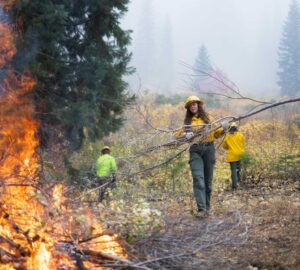
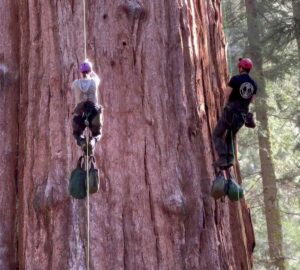

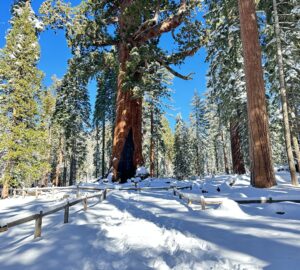
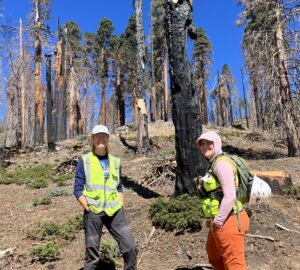
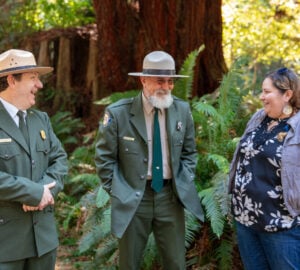
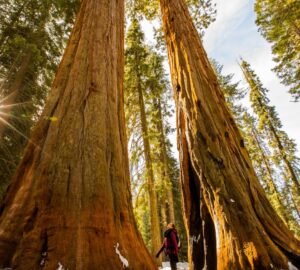
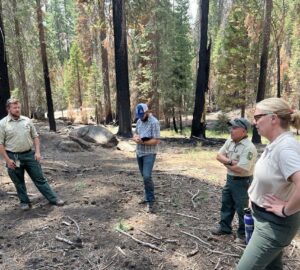
6 Responses to “How old are these redwoods, really?”
ROBERT JOHNSON
It makes no sense to me one can talk about a tree that can live to be several thousand years old the turn around and say they can live as long as 600 to 2600. At 15 feet dia. how can you even begin to think its only 600 years old?
DORN
think of the seed as a sphere – let’s say of three layers; it grows, it reforms and stretches, there are a few endpoints – branches and roots, stretching away from the center – let’s say that basically the impetus of the tree is mostly to grow up, and down; it does it by adding layers as time goes on. As new layers form and grow, these are where the major length of height (and depth) comes in; it is in the newer, and progressively farther from the core, layer grows, and then itself is encased by the next layer – girth accrues much more slowly than height – think of
the original core of the tree as perhaps only one to three feet in length/height, whereas the next (seasonal) layer of cells is wrapped around this growing twig, whatever its form, slowly and incrementally the tree gains height, a certain amount each season – the base maintains its full record since germination, but higher in the tree, as the tree stretches away from its original nucleus, the first year layer reaches only 1-3 feet, the next layer adds perhaps another 3, then each successive year/season the growth will vary, the height is the result of new layers, and retains that record, according to it height, but the base has remained stable and retains a record of the whole tree’s entire span -this is a little complicated, and likely i should re-write – but – i want my reader to have room to think for herself more than giving away the answer
Griff Griffith
If a tree that is 500 years old is cut and then stump sprouts and grows another 2,200 years before it falls, would that mean the tree was actually 2, 700 years old?
Garrison Frost
Ha, that’s a heck of a question. Maybe … yes?
DORN
no. if (no offense) twins were conceived, one was ushered on to a timely birth, the other was preserved as a frozen embryo, and some great time later let go through the normal gestation and birth process – would the ‘twins’ be the same age, even if they are still ‘twins’?
yes, one example is a tree, one is animal, but both are life, life is in the body that grows; it would seem that life in a ‘new bud’ would have its own span? (but time as an egg is not living life)
it’s a bad question, for several reasons, if you are young, keep your eyes open for them; if you are older, get on the ball! – but it’s a good question if it prompts one to think deeper, to question, compare, et c, and most important of all – LEARN – recognize an opinion as not really knowing, and a fact as demonstrable over and over again in a variety of ways. recognize when one holds an opinion, and when one might hold a fact. notice it is easier to observe in others, but just as likely in oneself. it can be worth being wrong to find yourself what is correct later, while if one thinks oneself right, one never looks further.
Jenny
Thanks for this blog post! Curious how much the ring count differs at the base of the tree vs. higher up the tree or should the count be close to the same? Is the assumption that there are more rings at the bottom of the tree since it’s wider or are the rings just easier to count down toward the bottom because they are spaced out more? So fascinating!